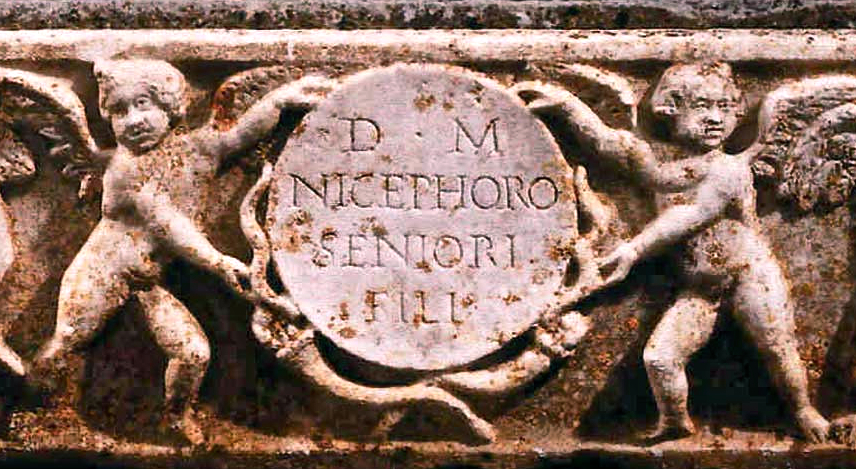

Title: Ancient Roman Coffin Box Carved Marble Child Family Sarcophagus
Shipping: $29.00
Artist: N/A
Period: Antiquity
History: N/A
Origin: N/A
Condition: Museum Quality
Item Date: 3th to 4th Century AD
Item ID: 6412
Roman Marble Sarcophagus of a Child Mediterranean: Origin: Mediterranean Circa: 3 th Century AD to 4 th Century AD Dimensions: 11" (27.9cm) high x 41" (104.1cm) wide. Collection: Classical Style: Roman Medium: Marble: nside this sarcophagus, a child whose time passed all too soon was once laid to rest by his loving family. Naturally, being able to afford a sarcophagus would have meant that the child would have been come from quite a wealthy family. Even the middle classes could only afford cinerary urns, suggesting that the individual who was once buried inside this work would have been of the offspring of Roman aristocracy. In the center of the relief is a pair of Erotes holding a clipeus (shield) atop two crossed cornucopiae. The Latin inscription on the shield reads “D M NICEPHORO SENIORI FILI,” translated as: “To the gods of the Underworld, to Nicephoros, son of Senioris." On either side of the central group are more Erotes. To the left stands one Erote holding a long staff or torch and another who has a garland. At the right of the sarcophagus, another pair of Erotes supports a helmet atop a column shaft. The imagery suggests a Bacchanal triumph, suggesting that the family might have been active in the cult of Bacchus. The death of a child is always a sad occasion, and we wonder what might have caused this child’s premature demise. An illness? An accident? Clearly, the family of this lost child mourned his memory and felt compelled to commission this beautiful sarcophagus to memorialize his life. The artistry of this work is quite impressive considering that it was created specifically to be buried. More than a mere coffin, this sarcophagus is a monument to a child who was taken away from his family too soon.
Link: http://en.wikipedia.org/wiki/Sarcophagus
A sarcophagus (plural, sarcophagi) is a box-like funeral receptacle for a corpse, most commonly carved in stone, and displayed above ground, though it may also be buried. The word "sarcophagus" comes from the Greek sarx meaning "flesh", and phagein meaning "to eat", hence sarcophagus means "flesh-eating"; from the phrase lithos sarkophagos. Since lithos is Greek for stone, lithos sarcophagos means "flesh-eating stone". The word also came to refer to a particular kind of limestone that was thought to decompose the flesh of corpses interred within it.
Most Roman examples were designed to be placed against a wall and are decorated on three of the sides only. Sarcophagi continued to be used in Christian Europe for important figures, especially rulers and leading church figures, and by the High Middle Ages often had a recumbent tomb effigy lying on the lid. More plain sarcophagi were placed in crypts, of which the most famous examples include the Habsburg Imperial Crypt in Vienna, Austria. The term tends to be less often used to describe Medieval, Renaissance, and later examples.
Ancient Roman sarcophagi—sometimes metal or plaster as well as limestone—were popular from about the reign of Trajan, and often elaborately carved, until the early Christian burial preference for interment underground, often in a limestone sepulchre, led to their falling out of favor. However there are many important Early Christian sarcophagi from the 3rd to 4th centuries.
In the early modern period, lack of space tended to make sarcophagi impractical in churches, but chest tombs or false sarcophagi, empty and usually bottomless cases placed over an underground burial, became popular in outside locations such as cemeteries and churchyards, especially in Britain in the 18th and 19th centuries, where memorials were mostly not highly decorated and the extra cost of a false sarcophagus over a headstone acted as an indication of social status.